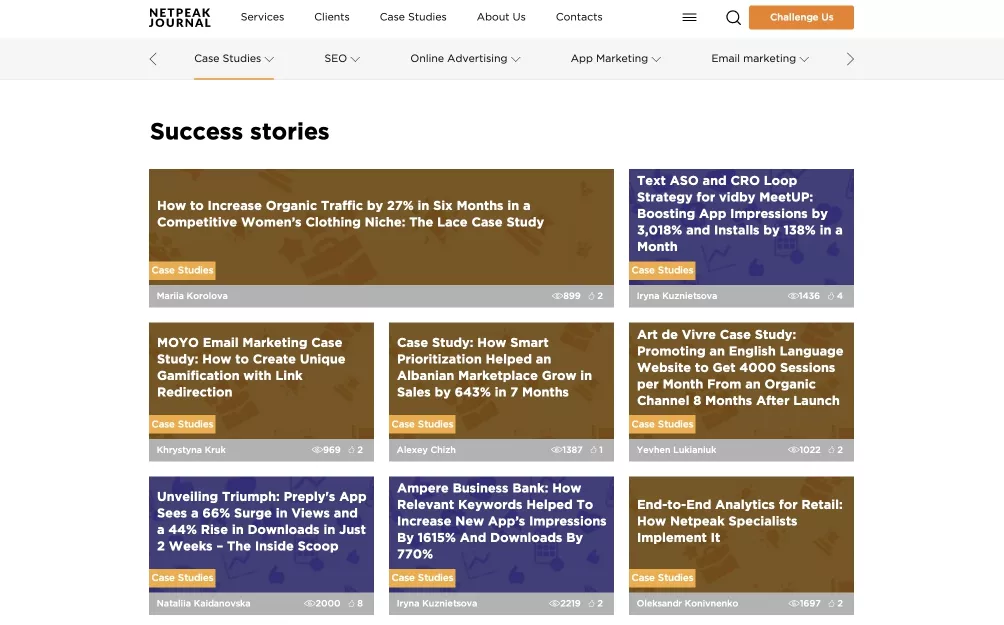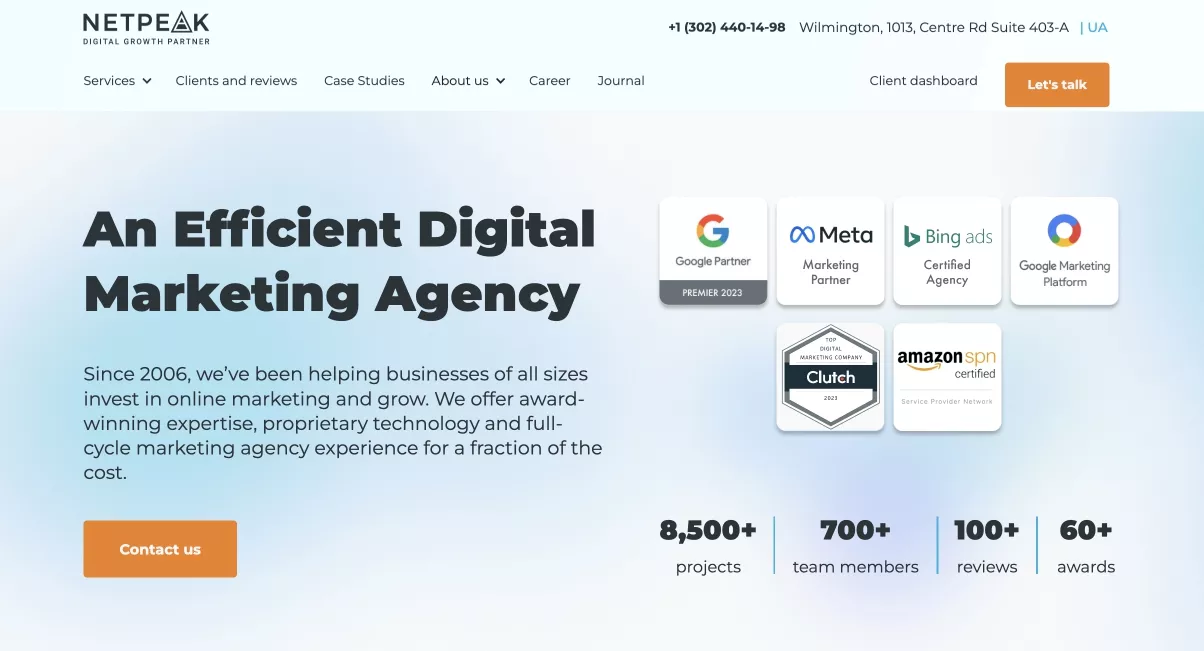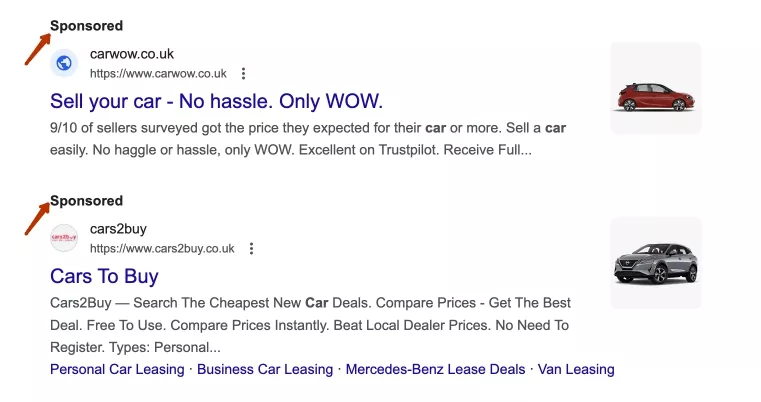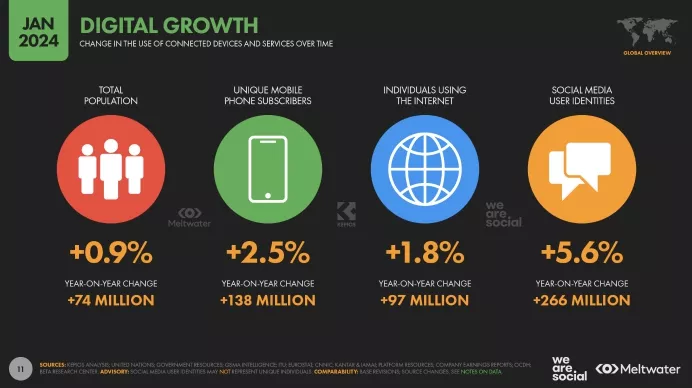Different Types of Digital Channels, and How to Use Them
Digital channels are online platforms and digital communication tools used to distribute information or provide services. Not only are they used as a tool to communicate and interact with customers, but they can also help businesses promote and sell goods and services. In addition, digital channels are a valuable source of data that can be collected and analyzed to improve business processes.
In this article, we’ll discuss the different types of digital channels, as well as the advantages and disadvantages of the most popular ones.
Categories of digital channels
Paid media
There are four groups according to the PESO model (Paid, Earned, Shared, Owned).
Paid advertising on search engines, social networks, affiliate platforms, and other digital platforms. For example, paid advertising on Google.
Earned media
All online mentions of a brand, whether in reviews, articles, comments, or social media streams, are earned media. For example, the Netpeak Journal features customer case studies with brand mentions.
Shared media
This is a separate category of shared media. It includes any content about your brand that is published by other brands or users on social media.
Owned media
This includes all of the brand’s own digital assets: websites, blogs, social media accounts, podcasts, online radio, and digital television. For example, the Netpeak site.
Types of digital marketing channels
Let’s take a look at eight of the most common digital marketing channels.
SEO (Search Engine Optimization)
SEO is a set of activities that aim to improve the visibility of a website in search results. For example, SEO may aim to rank a website higher in Google search results, which receives 81.95% of all user queries.
According to Profitworks, the average SEO campaign has an ROI of 275%. In other words, for every dollar spent on SEO, you can expect a return of $2.75.
SEO campaigns have certain pros and cons.
|
Pros of SEO |
Cons of SEO |
|
Organic traffic SEO promotion attracts users to the site through organic search. |
Delayed results Results are only visible a few months after optimization. |
|
Long-term effects With proper optimization, you will get stable organic traffic. Customers will visit the site and perform targeted actions, such as ordering services or goods. |
Changes in search algorithms Search engines often change their algorithms, so you need to monitor and update your website regularly. |
|
High quality conversions Traffic from search engines is usually of higher quality. These users have actively searched for a product or service similar to yours and are more likely to convert. |
High level of competition To achieve high rankings in search results, you must compete with other market participants. |
|
Lower cost There are no direct expenses, such as cost per click in paid advertising. Once you achieve a good position in the search results, you will get organic traffic for a long time. |
Narrow span of control Search engines rank a website based on how well it is optimized and how useful it is to users. There is no way to guarantee exact results. |
|
Positive user experience SEO often involves dealing with the structure and keyword list of the site, ease of navigation, optimization of loading speed, etc. As a result, it is more convenient for visitors to interact with an SEO-optimized website. |
Technical complexity SEO requires knowledge of technical aspects and the ability to work with site structure, metadata, etc. You’ll need expert help. |
PPC (pay-per-click)
This type of search engine advertising involves paying for each click on an ad.
PPC advertising
PPC is a type of search engine advertising where an advertiser pays when users click on ads. There are two types: search and topical.
For search ads, the user will see the "Sponsored" icon in the corner of the ad.
Topical advertising displays ads on multiple websites that have advertising partnerships. For example, when a user searches for car information on a popular site, they will see an ad at the same time.
The PPC advertising channel has its advantages and disadvantages.
|
Pros of PPC |
Cons of PPC |
|
Targeting Ads can be precisely targeted based on the demographics of the target audience. |
Competition and cost per click Some niches are extremely competitive for clicks. |
|
Quick start You can launch an advertising campaign in a short time and start acquiring customers quickly. |
Budgeting A PPC advertising campaign involves constant spending. The smaller the budget, the fewer impressions and conversions you will get. |
|
Flexible management You can improve campaigns in real time by replacing keywords, images, etc., as needed. |
A risk of low conversion rates The specific behavior of consumers toward a particular service/product or strong competition in a niche can reduce the conversion rate. |
|
Measurable results There are many parameters for evaluating effectiveness, allowing you to quickly optimize campaigns in real time. |
Banner blindness Users are accustomed to ignoring ads on search engine results pages. |
|
Budget management You avoid unwanted expenses by setting the maximum cost per click and budget per campaign. |
Limited creativity The size and shape of the ad impose certain limits on creative design. |
|
Geotargeting You can display ads for specific regions and even neighborhoods, which is especially useful for local brands. |
Search engine dependency Search engine algorithms and contextual advertising rules are always changing, and this can affect the effectiveness of ad campaigns. |
Targeted social media advertising
You can highly customize your ads for Facebook, Instagram, Twitter, LinkedIn, TikTok, and YouTube. How effective is targeted social media advertising?
Well, according to the Digital Growth report, there were over five billion social media users in 2024; this is a huge market of people to advertise to.
Despite its popularity, this advertising channel has its positive and negative aspects:
|
Pros of targeted advertising |
Cons of targeted advertising |
|
Precise audience definition You can customize the audience by various parameters: age, gender, location, interests, behavior, etc. |
Information overload, banner blindness There are too many targeted ads, including competitor ads. As a result, users tend to ignore ads due to ad fatigue and banner blindness. |
|
Broad audience reach In 2024 alone, the number of social media users increased by 266 million. |
Competition for attention There is a lot of competition, including advertising from brands competing for the same audience and a large number of advertising campaigns. |
|
Interaction Direct interaction with subscribers, such as likes and shares, helps build strong relationships and encourage loyalty to your brand. |
Negative feedback An ad may receive negative reviews and comments if it causes controversial reactions. Or if a customer has had a bad experience with your brand or niche in the past, they may leave negative feedback. |
|
Increasing brand awareness Proper audience engagement helps build trust in the company and drives purchases. |
Continuous monitoring and optimization It takes time and money to respond to customers and optimize an advertising campaign in a timely manner. |
|
Flexible customization You can experiment with the format and content of your ads. |
Risk of low conversion rate There is a risk that customers in your niche will not make a purchase decision on social media. |
SMM (social media marketing)
SMM is the use of social media platforms, such as Facebook, Instagram, TikTok, Twitter, and LinkedIn, to create and promote content to achieve marketing goals.
Currently, the total number of social media accounts is almost equal to the total number of Internet users in the world.
|
Pros of SMM |
Cons of SMM |
|
Broad reach and direct communication with customers You can reach an audience of over five billion accounts, enjoy direct communication with customers, and get fast feedback. |
Difficulties in measuring ROI It can sometimes be difficult to measure indicators, especially audience engagement and brand enhancement. |
|
Brand extension Social media is a convenient platform for creating and reinforcing a company’s image and announcing news about products and services. |
Content updates You need a content plan and regular publishing. |
|
Advertising opportunities A variety of formats are available, from text to video. There is unlimited space for creative advertising. |
Negative feedback You may face a barrage of negative comments and discussions, and you will have to carefully manage your brand reputation. |
|
Measurement and analysis of results The administrator’s account will provide metrics on audience engagement, ad effectiveness, and more. |
Algorithm changes Changes in the rules used to rank social media posts will affect the organic visibility of content. You may need additional advertising investments to manage this. |
Email marketing
Services and products can be promoted through manual and automated (triggered) mailings, such as emails, SMS, and push notifications.
Optinmonster research confirms that marketing emails influence the purchase decisions of 59% of customers. According to Campaign Monitor, every dollar invested in effective email marketing returns $38 to the company.Here are its pros and cons.
|
Pros of email marketing |
Cons of email marketing |
|
Direct communication and content personalization You can create personalized emails based on the preferences of the target audience. This increases open rates and the likelihood of the customer taking a desired action, such as making a purchase, subscribing to a blog, etc. |
Spam filtering The spam filters used by email providers may send emails to the spam folder even if they are not spam. This decreases open rates and conversions. |
|
High conversion rates Properly configured email campaigns will drive sales, sign-ups, and other targeted actions. |
Subscriber churn From time to time, people tend to unsubscribe from emails due to irrelevant or excessive content, etc. Also, consider the hidden churn that occurs when people don’t unsubscribe but don’t open emails. This further underestimates the deliverability rate. |
|
Low cost This digital channel is relatively inexpensive to launch and maintain. |
Design and format restrictions Some providers have technical requirements that limit creativity in email branding. |
|
Results analysis You can access detailed analytics that track opens, clicks, conversions, and other campaign performance metrics. |
Delivery issues Emails can be delayed or blocked due to email rule violations or unwanted content. |
|
Monitoring You can monitor and control the audience, timing, and frequency of the emails. |
Difficult to measure marketing effectiveness Certain metrics, such as open rates and clicks, are not always accurate or complete. |
Content marketing
Create and distribute useful audio, video, and text materials to attract potential customers and retain the loyalty of existing ones.
This type of digital marketing is useful for companies whose audience is end-users (B2C), as well as those who create services and products for other companies (B2B).
For example, B2B blogs with educational content receive 52% more organic traffic than B2B blogs with content aimed at other businesses.
|
Pros of content marketing |
Cons of content marketing |
|
Attracting the target audience, increasing brand awareness, and boosting engagement. You can consistently create high-quality text, audio, and video materials to attract your target audience. It increases brand loyalty and awareness and strengthens your image as an expert in the niche. |
Information overload and competition for attention A large number of advertisements, as well as entertaining or low-quality social media content, will distract users from useful content. |
|
Strengthening SEO High-quality and relevant text, audio, and video will improve a website’s position and credibility in search engines. |
Negative feedback There is a risk of getting an unpredictably harsh and not always justified reaction to the content. Be careful with humor, as not all audiences perceive it in the same way. |
|
Lead generation and conversion growth It’s an effective tool for attracting leads and increasing conversions. |
Constant flow of content required To regularly publish useful content, you need to create and update materials and research new topics. This takes time and money. |
|
Reduced advertising costs High-quality, long-term relevant material (evergreen content) attracts organic traffic long after publication. |
Low conversion rate Social media users are usually looking for entertainment or communication rather than useful content. |
Mobile marketing
Mobile marketing activities are aimed at selling goods and services via mobile phones, smartphones, and tablets.
Mobile e-commerce is a huge market, and it accounts for more than $3.4 trillion of retail e-commerce sales.
|
Pros of mobile marketing |
Cons of mobile marketing |
|
Audience reach Mobile devices are used by 5.44 billion people or 68% of the world’s population. |
Limited views due to screen size, time, or ad blockers. Not all mobile devices have suitable screens for displaying ads. Users tend to quickly scroll through information, close ads, or use ad blockers. |
|
PersonalizationYou can customize advertising display parameters with high accuracy. |
Competition As the mobile marketing market grows, some niches are experiencing increased advertising costs with fewer conversions. |
|
Instant access to information Mobile marketing allows you to provide information about a product or service anytime, anywhere. It gives prospective customers instant access to branded web resources. |
Technology and platform dependence Mobile advertising depends on the operating systems of mobile devices and mobile apps, and their compatibility with browsers. It is also subject to changes in regulations and policies. |
|
Mobile apps encourage interactivity The conversion rate of a mobile app is three times higher than that of a mobile website. Games, tests, and quizzes increase audience engagement. |
|
|
Geotargeting This is an important advertising setting that is especially useful for local businesses. |
Digital TV
Digital TV differs from analog television in the high quality of the digital signal and personalized settings for each viewer. This includes advertising settings.
|
Pros of digital TV |
Cons of digital TV |
|
Broad audience reach around the world |
High costs Video production and broadcasting are expensive. |
|
Targeted advertising The ability to use viewer data to better target ads. |
Limited access Not all of the target audience may use digital TV or have consistent access (e.g., Internet issues). |
|
Interactivity Viewers can participate in online polls, sweepstakes, and test drives, making it an interactive experience. In return, they may receive promotional codes and discounts. |
Performance measurement issues It is difficult to analyze advertising performance due to limited real-time tracking of viewer behavior. |
|
Multimedia content It is possible to integrate graphics, animations, and interactive elements to create appealing and creative ads. |
CompetitionFree video content is also available on social networks, video hosting, and streaming services. For example, YouTube has more than a billion daily views. |
Influencer marketing
This is a form of social media marketing involving endorsements and product placement from opinion leaders (influencers).
|
Pros of influencer marketing |
Cons of influencer marketing |
|
Access to the target audience increases trust and authority An opinion leader’s subscriber base has a high level of trust in their recommendations. This is potentially more effective than traditional advertising. |
Limited control over content The content that an influencer posts on their own resources may not match the brand’s tone of voice. This will further affect the reputation and effectiveness of the advertising campaign. |
|
Effective influence and increased brand awareness The messages sent out by opinion leaders are seamlessly perceived by their audiences. This increases the effectiveness of advertising and the recognition of products and services. |
Difficulty in measuring return on investment (ROI) The link between influencer actions and customer purchases is indirect, making it difficult to assess ROI |
|
Expanding the audience You can get new subscribers and customers from the influencer’s audience. |
There are no conversion guarantees |
Choosing the right digital channel
If your business is in an active growth and development phase, SEO website development and PPC are usually effective ways to quickly generate sales and return on investment. Social networks like Instagram and TikTok also work well for certain types of businesses, for instance, beauty salons.
However, there is no one-size-fits-all formula. You have to evaluate each case individually and take into account the following factors.
- Business type.
- Business goals.
- Target audience.
- Sales funnel.
- Budget.
Next, you need to analyze your competitors. Research which online platforms they are present on and where they attract the target audience the most. Then, you can test these channels, see how effective they are for achieving your KPIs, and analyze the costs. Also, pay attention to platforms where your competitors are absent — there is a certain probability of finding opportunities for growth.
How to measure the effectiveness of digital channels
To measure the results of your advertising efforts, you have to analyze KPIs and costs.Here are some metrics for measuring results.
- Site traffic: unique visitors, page views, time spent on site, etc.
- Conversions: the number of users who performed the desired action (purchase, subscription, form submission, etc.).
- ROI (return on investment): the ratio of profit to marketing costs.
- CAC (cost per acquisition): the marketing cost to acquire a customer.
- CR (conversion rate): the percentage of total visitors who convert.
- ROAS (return on advertising spend), which is important for measuring the effectiveness of advertising campaigns.
Costs can be analyzed in the following categories.
- Advertising: the cost of an advertising campaign in each digital channel.
- Content: the cost of creating content for digital channels, including text, images, video, and audio.
- Technical infrastructure: costs of hosting, software, mobile application development, etc.
- Personnel: salaries for employees, freelancers, or digital agency services.
Conclusions
Digital channels are online platforms and digital communication tools used to distribute information or provide services. There are four types of digital channels:
- Paid mediaPaid advertising on search engines, social media, affiliate platforms, and other digital platforms.
- Earned media. All online mentions of the brand by others, including reviews, articles, comments, or social media streams.
- Shared media. Any content published about your brand by other brands or social media users.
- Owned media. These are all of the brand’s own digital assets, such as websites, blogs, social media accounts, podcasts, online radio, and digital television.
The main types of digital channels are:
- SEO (Search Engine Optimization).
- PPC (pay-per-click).
- SMM (social media marketing).
- Email marketing.
- Content marketing.
- Mobile marketing.
- Digital television.
- Influencer marketing.
When choosing the right digital channel for you, take into account your business type and business goals. In addition, consider your target audience, sales funnel, and budget.
Before you launch your digital channel of choice, don’t forget to conduct competitor research and test the channel’s effectiveness based on metrics and cost. To evaluate the results, analyze both KPIs and costs.
For KPIs, look at metrics like site traffic, conversions, ROI (return on investment), CAC (cost per acquisition), CR (conversion rate), and ROAS (ratio of advertising revenue to advertising costs).
For costs, take into account the costs of advertising, content, technical infrastructure, and personnel.
Related Articles
Display Advertising Effectiveness Analysis: A Comprehensive Approach to Measuring Its Impact
In this article, I will explain why you shouldn’t underestimate display advertising and how to analyze its impact using Google Analytics 4
Generative Engine Optimization: What Businesses Get From Ranking in SearchGPT
Companies that master SearchGPT SEO and generative engine optimization will capture high-intent traffic from users seeking direct, authoritative answers
From Generic to Iconic: 100 Statistics on Amazon Marketing for Fashion Brands
While traditional fashion retailers were still figuring out e-commerce, one company quietly revolutionized how U.S. consumers shop for everything from workout gear to wedding dresses







